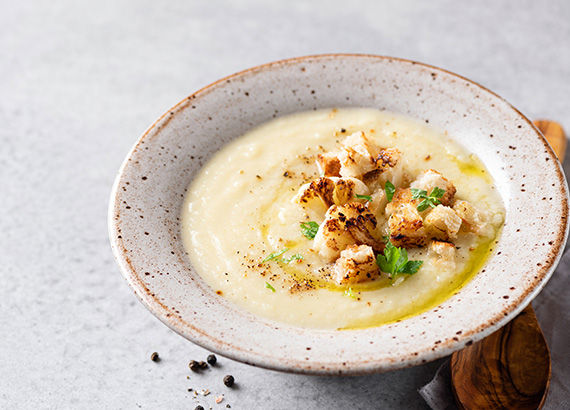Healthy Eating as you Age: Part Three - Rediscovering Cauliflower

In our ongoing series on healthy eating for the elderly, we’ve come across a trending topic that may surprise you: cauliflower. Yes, this humble vegetable has become the talk of the town, and for good reason! While cauliflower may seem like just another food fad, a deeper look reveals that it offers significant health benefits and a world of culinary possibilities.
At Vermont Aged Care, we understand the importance of proper nutrition for our beloved elderly residents, and we’re excited to share these insights with you to help you care for your elderly loved ones.
Interesting Facts About Cauliflower
Cauliflower, a member of the cruciferous vegetable family, is versatile and highly nutritious. When cooked properly, it has a mild, pleasant taste and avoids the sogginess that can come with overcooking. The vegetable is widely available, making it an affordable and accessible choice.
Packed with nutrients and high in fiber, cauliflower supports digestion, which is particularly important for the elderly. It has also been linked to lower risks of cancer and high cholesterol, making it a valuable addition to a senior diet. Nutritionists are increasingly recommending cauliflower as a healthier alternative to high-starch foods like bread, pasta, rice, and potatoes, which can contribute to health issues such as diabetes, obesity, and heart disease.
The Health Benefits of Cauliflower
Here’s what one cup of raw cauliflower provides:
- Fiber (2.0 grams): Supports digestion
- Protein (2.0 grams): Helps with muscle maintenance
- Carbohydrates (5.0 grams): Provides steady energy
- Potassium (320 mg): Regulates the body’s fluid balance
- Calcium (24 mg): Essential for bone health
- Vitamin C (51 mg): Boosts the immune system
- Folate (61 mcg): Promotes cell and tissue growth
- Vitamin K (15 mcg): Aids in blood clotting
- Vitamin A (small amount): Supports vision and immune health
Given the high amount of processed carbs and animal proteins in many Western diets, cauliflower can be a fresh and nutrient-dense substitute for less healthy options. And, with creative recipes, it doesn’t have to be boring!
How to Enjoy Cauliflower in New Ways
Cauliflower is gaining popularity as a replacement for higher-calorie foods. Here are some ideas to get the most out of this vegetable:
- Cauliflower “Rice”: Finely chop cauliflower into small pieces to use as a rice substitute in stir-fries and curries.
- Cauliflower Mash: Boil and mash cauliflower with a bit of butter and milk for a creamy, low-carb alternative to mashed potatoes.
- Cauliflower Pasta Substitute: Par-boiled cauliflower works as a base for pasta sauces.
- Cauliflower Tortillas: Flattened cauliflower can even be used to make low-carb tortillas!
- Cauliflower Purée: A lighter alternative to rich sauces, perfect for pairing with proteins or as a side dish.
You can easily substitute cauliflower for potatoes or pasta in many dishes, helping to reduce calorie intake and maintain a healthy weight.
In Conclusion
While cauliflower is having its moment in the spotlight, other cruciferous vegetables like broccoli and brussels sprouts also offer powerful anti-inflammatory and antioxidant benefits. Including these vegetables in a senior’s diet can support health, reduce inflammation, and provide essential nutrients.
Recommended Reading:
This blog is intended for general advice. For personalised recommendations, consult your GP, or for support & advice on residential aged care in Melbourne, contact Vermont Aged Care.

